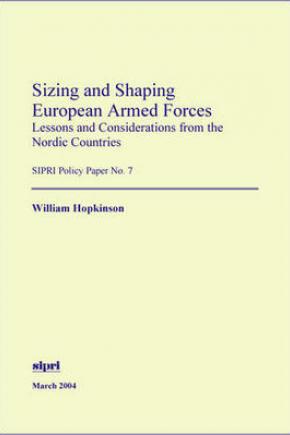Sizing and Shaping European Armed Forces: Lessons and Considerations from the Nordic Countries
The task of determining the shape and size of national armed forces has become more difficult and complex since the end of the cold war owing to changes in the nature of security and the threats to it, changes in the roles of military forces and other organizations, and changes in international institutions and their functioning. These transformations have affected no region more than that of northern and western Europe. The focus of this policy paper is on how European countries might better prepare themselves to meet the requirements of the current security agenda, for cooperative military action either with the United States, or with other European countries; either in ad hoc coalitions, or under the auspices of the North Atlantic Treaty Organization (NATO) or the European Union (EU).
The present study, although intended to be of general application, focuses on four Nordic countries—Denmark, Finland, Norway and Sweden—which were once preoccupied with a delicate local security balance and the looming shadow of the Soviet Union, but are now drawn into a wider process of maximizing Europe's contribution to the 'export of security'. Nordic defence performance is analysed from the standpoint of general defence planning desiderata. Planning should start from an up-to-date assessment of the range of security threats, and the role of military assets as such, in meeting them. It should then consider how each country's limited resources and particular skills can best be deployed to meet the challenges, acting together with partner countries when necessary, as is most often the case. Applying this set of tests, Hopkinson concludes that the remotest contingency for any Nordic state today is that of an all-out territorial attack: yet that is what the lion's share of national defence preparations in Finland, Norway and Sweden in particular is still directed towards.
The Nordic countries need to shift more resources away from what are essentially cold-war defence configurations if they wish to contribute more to crisis management, where they excel, and to fine-tune the military input necessary to tackle their new 'homeland security' challenges. For all of them such changes also, of course, come up against obstacles of traditions and political psychology; they would mean entering into a collective defence mentality that no Nordic country has, so far, fully embraced.
Hopkinson's use of universal, 'ideal' defence planning principles bears dividends notably in illuminating the features common to all four countries addressed, regardless of their different alliance statuses. He writes as an enquiring friend of northern Europe, in no way wishing to constrain those countries' future choices, but striving for clarity on the implications that those choices will bring.
1. Introduction
2. International cooperation
3. European interests
4. Threats
5. Force planning
6. Nordic case studies
7. Conclusions

